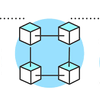What is the difference between a class and an ID in CSS?
In CSS, a class and an ID are both selectors used to apply styles to elements in HTML, but they differ in their usage and specificity.
An ID is a unique identifier used to target a single element on a web page. An ID selector starts with a hash (#) symbol followed by the ID name. For example:
#my-element {
background-color: blue;
}
A class, on the other hand, is a selector used to target multiple elements on a web page. A class selector starts with a period (.) symbol followed by the class name. For example:
.my-class {
color: red;
}
Another difference between classes and IDs is their specificity. IDs are more specific than classes, which means that styles applied to an ID will override styles applied to a class. For example:
#my-element {
background-color: blue;
}
.my-class {
background-color: red;
}
In this example, the background color of #my-element will be blue, even though the background-color property is also applied to .my-class. This is because IDs have a higher specificity than classes.

As a CSS developer, it is essential to have a good understanding of the language and its applications. When interviewing for a CSS developer position, you can expect questions that cover both theoreti

CSS preprocessors like Sass (Syntactically Awesome Style Sheets) and Less (Leaner Style Sheets) have become increasingly popular among web developers in recent years. These tools provide a way to simp

CSS Grid is a powerful tool that enables developers to create complex layouts with ease. It provides a two-dimensional grid system that allows for the creation of both rows and columns. This provides

Creating a responsive grid layout for a website can be a challenging task, especially if you are not familiar with CSS Flexbox. CSS Flexbox is a powerful tool that allows developers to create complex

As more and more websites become image-heavy, web developers are constantly looking for ways to optimize page load times without compromising the user experience. One of the most effective methods of

In the digital world, cross-browser compatibility issues can be a nightmare for web developers and designers. With so many browsers available, it's nearly impossible to guarantee that your website wil

In today's digital age, creating a responsive layout for your website is essential. A responsive layout ensures that your website looks great on any device, from a desktop computer to a mobile phone.

Optimizing the loading time of a web page is crucial for providing a positive user experience and improving SEO. Here are some best practices for optimizing web page loading time:

In CSS, a class and an ID are both selectors used to apply styles to elements in HTML, but they differ in their usage and specificity.
